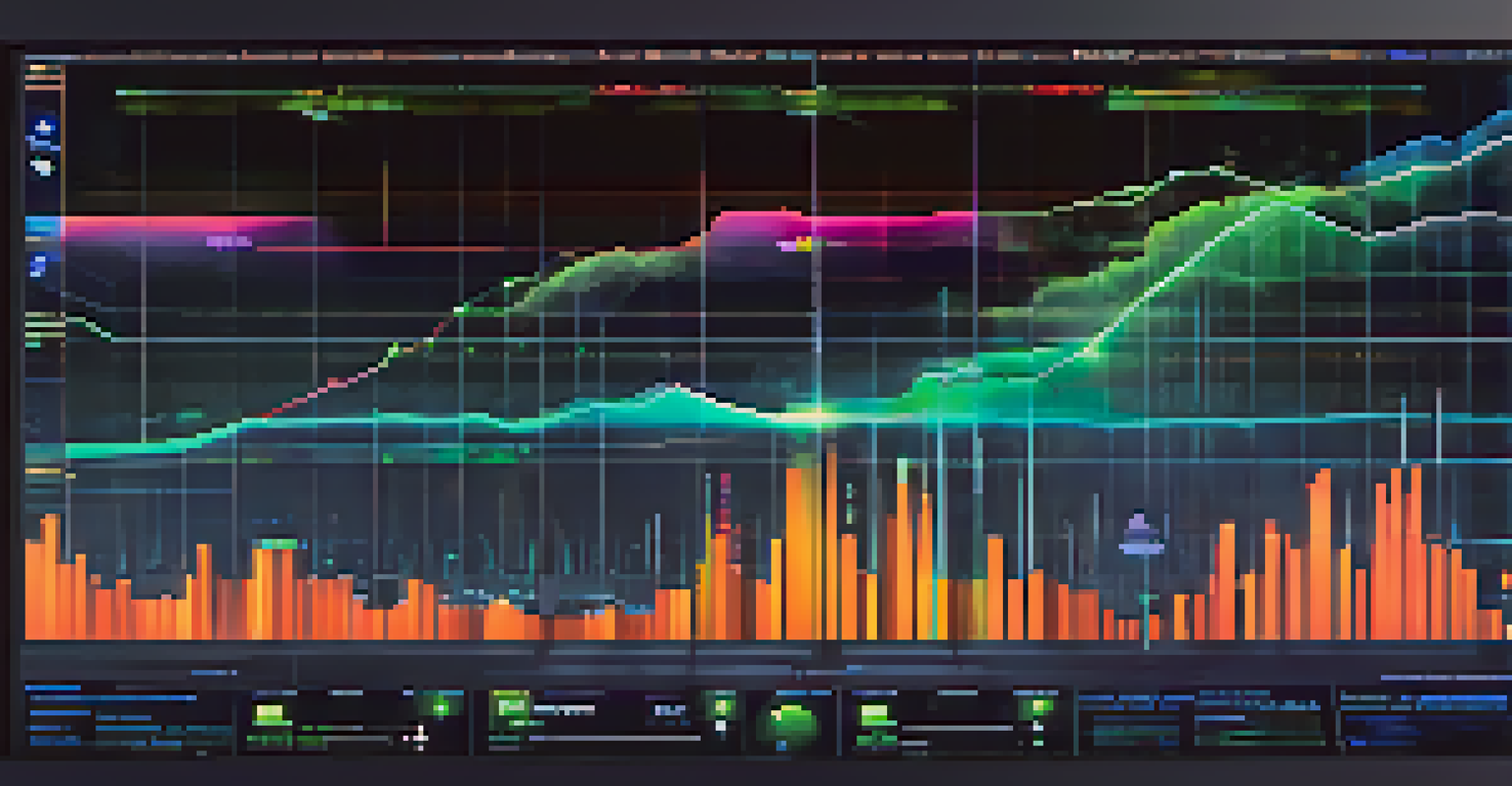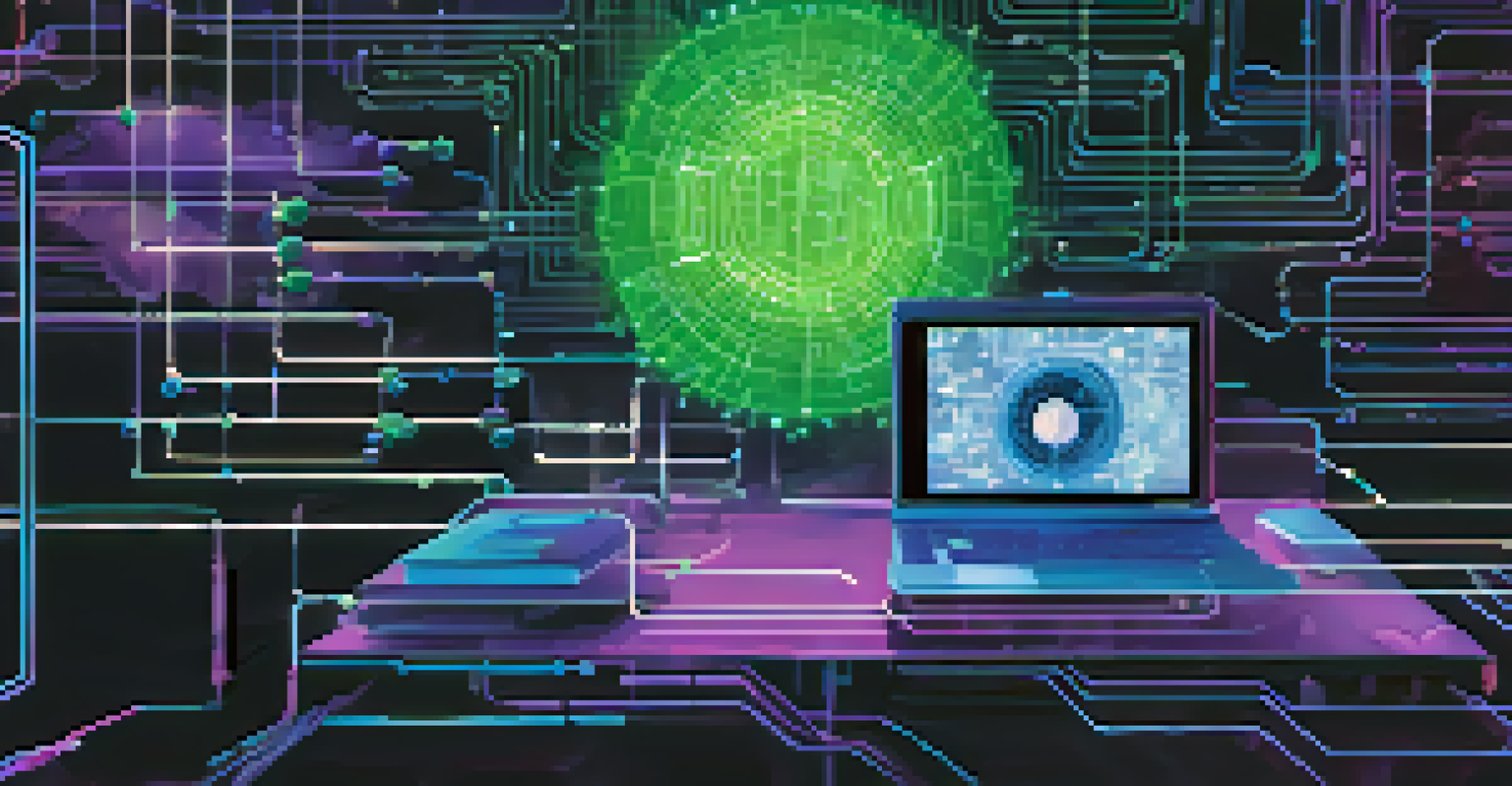Virtual Forensics: Investigating Virtual Machines and Environments

Understanding Virtual Forensics and Its Importance
Virtual forensics is the practice of collecting, analyzing, and preserving data from virtual environments, such as virtual machines (VMs). This field has grown significantly as organizations increasingly rely on virtualization for their IT infrastructure. Just like traditional forensics, where physical evidence is meticulously examined, virtual forensics aims to uncover digital footprints left in the virtual space.
Digital forensics is the science of collecting, preserving, and analyzing electronic data to help investigate cyber crimes.
The importance of virtual forensics cannot be overstated. With cyber threats on the rise, being able to investigate incidents within virtual environments is crucial for identifying breaches and understanding their impacts. Moreover, virtual forensics helps organizations maintain compliance with regulations by ensuring that proper data handling and investigation procedures are followed.
In essence, virtual forensics serves as a bridge between the digital and physical worlds, allowing investigators to piece together events that may have transpired within a virtual setting. As technology continues to evolve, so too does the need for skilled professionals in this dynamic field.
Key Differences Between Traditional and Virtual Forensics
While both traditional and virtual forensics aim to uncover evidence, their methods and environments differ significantly. Traditional forensics deals with physical devices, collecting evidence from hard drives, mobile phones, and other tangible media. In contrast, virtual forensics focuses on data stored in virtual machines and cloud environments, which can be more complex due to the layered nature of virtualization.

One of the main differences lies in the evidence collection process. In virtual forensics, investigators often capture entire VM images, including operating systems, applications, and data stored within them. This comprehensive approach allows for a more thorough analysis of the virtual environment, uncovering potential evidence that might be missed in a traditional setup.
Importance of Virtual Forensics
Virtual forensics is essential for investigating cyber incidents and ensuring compliance with regulations in increasingly virtual IT environments.
Additionally, virtual environments can be ephemeral, meaning they can be created and destroyed quickly. This aspect requires forensic investigators to act swiftly to preserve evidence before it disappears, making the field both challenging and exciting. The dynamic nature of virtual environments pushes the boundaries of traditional forensic methodologies.
Common Tools Used in Virtual Forensics Investigations
Investigators rely on a variety of tools to conduct virtual forensics effectively. Some popular tools include EnCase, FTK Imager, and Autopsy, each offering unique functionalities tailored for virtual environments. These tools allow for the imaging of VMs, analysis of file systems, and recovery of deleted files, ensuring a comprehensive examination.
As technology evolves, so must our forensic methodologies to keep pace with the changing digital landscape.
Another essential set of tools are those designed for cloud forensics, such as AWS CloudTrail and Azure Security Center. These tools help investigators gather logs and other relevant data from cloud platforms, which can provide critical insights into incidents. By utilizing the right tools, forensics experts can navigate the complexities of virtual environments and extract valuable evidence.
Moreover, many of these tools are designed with user-friendliness in mind, allowing investigators to focus on analysis rather than getting bogged down by complicated interfaces. The evolution of these tools continues to enhance the efficiency and effectiveness of virtual forensics investigations.
Challenges Faced in Virtual Forensics
Despite its advancements, virtual forensics is not without its challenges. One of the primary issues is the sheer volume of data that can be generated in a virtual environment. As organizations increasingly adopt virtualization, the amount of data that needs to be analyzed can be overwhelming, complicating the investigative process.
Another significant challenge is the potential for data manipulation. Virtual machines can be easily altered, making it difficult for investigators to ascertain the integrity of the evidence. Unlike physical devices, where tampering leaves clear signs, virtual environments may hide changes, requiring forensic experts to employ advanced techniques to detect such alterations.
Challenges in Data Analysis
The volume of data and potential for manipulation in virtual environments pose significant challenges for forensic investigators.
Lastly, the rapid pace of technological change in virtualization means that forensic investigators must continuously update their skills and tools. Keeping up with new software and hardware developments is essential for effective investigations, but it can also be a daunting task for professionals in the field.
The Role of Legal Considerations in Virtual Forensics
Legal considerations play a vital role in the realm of virtual forensics. Just as in traditional forensics, the chain of custody is crucial in ensuring that evidence is admissible in court. Investigators must meticulously document every step of their process, from data collection to analysis, to maintain the integrity of the evidence.
Furthermore, understanding data privacy laws and regulations is essential. Virtual environments often contain sensitive information, and mishandling this data can lead to significant legal repercussions. Forensic experts must navigate the legal landscape carefully to ensure compliance while conducting their investigations.
By integrating legal knowledge with technical expertise, virtual forensics professionals can provide robust support during legal proceedings. This dual understanding helps ensure that evidence is not only collected and analyzed effectively but also stands up to scrutiny in a court of law.
The Future of Virtual Forensics
As technology continues to evolve, so too does the field of virtual forensics. One of the most exciting trends is the integration of artificial intelligence (AI) and machine learning into forensic tools. These technologies can help automate data analysis, making it faster and more efficient to uncover evidence in complex virtual environments.
Moreover, as organizations increasingly adopt cloud computing and hybrid environments, the demand for skilled virtual forensics professionals will only grow. This shift will necessitate ongoing training and adaptation to new tools and techniques, ensuring that investigators remain effective in their roles.
Future Trends in Forensics
The integration of AI and cloud technologies will shape the future of virtual forensics, enhancing the efficiency and effectiveness of investigations.
Ultimately, the future of virtual forensics is bright, with endless possibilities for innovation and improvement. As new challenges arise, the field will continue to evolve, providing essential support in the fight against cybercrime and ensuring the security of virtual environments.
Conclusion: The Vital Role of Virtual Forensics Today
In conclusion, virtual forensics is a critical discipline in today's digital landscape. With the increasing prevalence of virtual environments, understanding how to investigate and analyze these spaces is more important than ever. Virtual forensics not only aids in resolving cyber incidents but also helps organizations protect their data and maintain compliance with legal requirements.
As the field continues to grow and evolve, it presents numerous opportunities for professionals seeking to make a difference in cybersecurity. The combination of technical skills, legal knowledge, and a keen investigative mindset is essential for success in this dynamic area.

Ultimately, virtual forensics serves as a backbone for digital security, offering insights and solutions that are vital for organizations navigating the complexities of the virtual world.